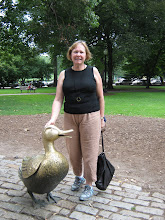When I was a child I remember experiencing two earthquakes, but as an adult I feel that Australia seems to have had many more. At school we practise fire drills and lockdowns regularly, but I have never practised what to do in the event of an earthquake. ShakeOut Day is a day when children practise what to do during an earthquake.
Earthquakes can be terrifying, and it is natural for children and adults to be afraid. According to the Association of School Psychologists, earthquakes are especially difficult to cope with because they come without warning and are followed by aftershocks. With continued shaking, survivors do not experience a clear end to the crisis. I remember talking to a friend whose niece was a teacher in Christchurch, NZ when they felt as if they were having a run on earthquakes, and this teacher said the biggest problem was being able to ask the young children's questions eg when will the next one be? why are they happening here?
Australia does not typically experience large earthquakes and on average only experiences a single magnitude 5 (or greater) event each year. Understanding whether you are in an earthquake prone area is important so that you can take measures to reduce the potential impacts and know what to do during a disaster.
Queensland Health has published a pamphlet telling parents and caregivers what to do and it includes a picture book story called Birdie and the Earthquake. It is available online and in book format.
There is also an activity book Rocket's Earthquake Safety Activity Book which teaches children the tools they need to stay safe and prepared.
Your library may have one of these books:
Lily and Niko's childcare class is practicing for the Great ShakeOut™. They learn that the Great ShakeOut™helps prepare them for an earthquake. They learn the basics of what causes an earthquake, how it causes things to fall and break, and how it can sound like a really loud tummy rumble. They also learn where they can go and what they should to (drop, cover, and hold on) to be safe inside buildings, outside, and in a car. At the end of the day they know what to do to be safe during an earthquake.
Many of the general nonfiction books about earthquakes may make your young audience scared so you will need to know your audience well and the books well in order to match them up.
Look for:











No comments:
Post a Comment